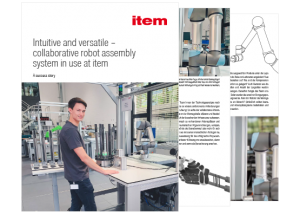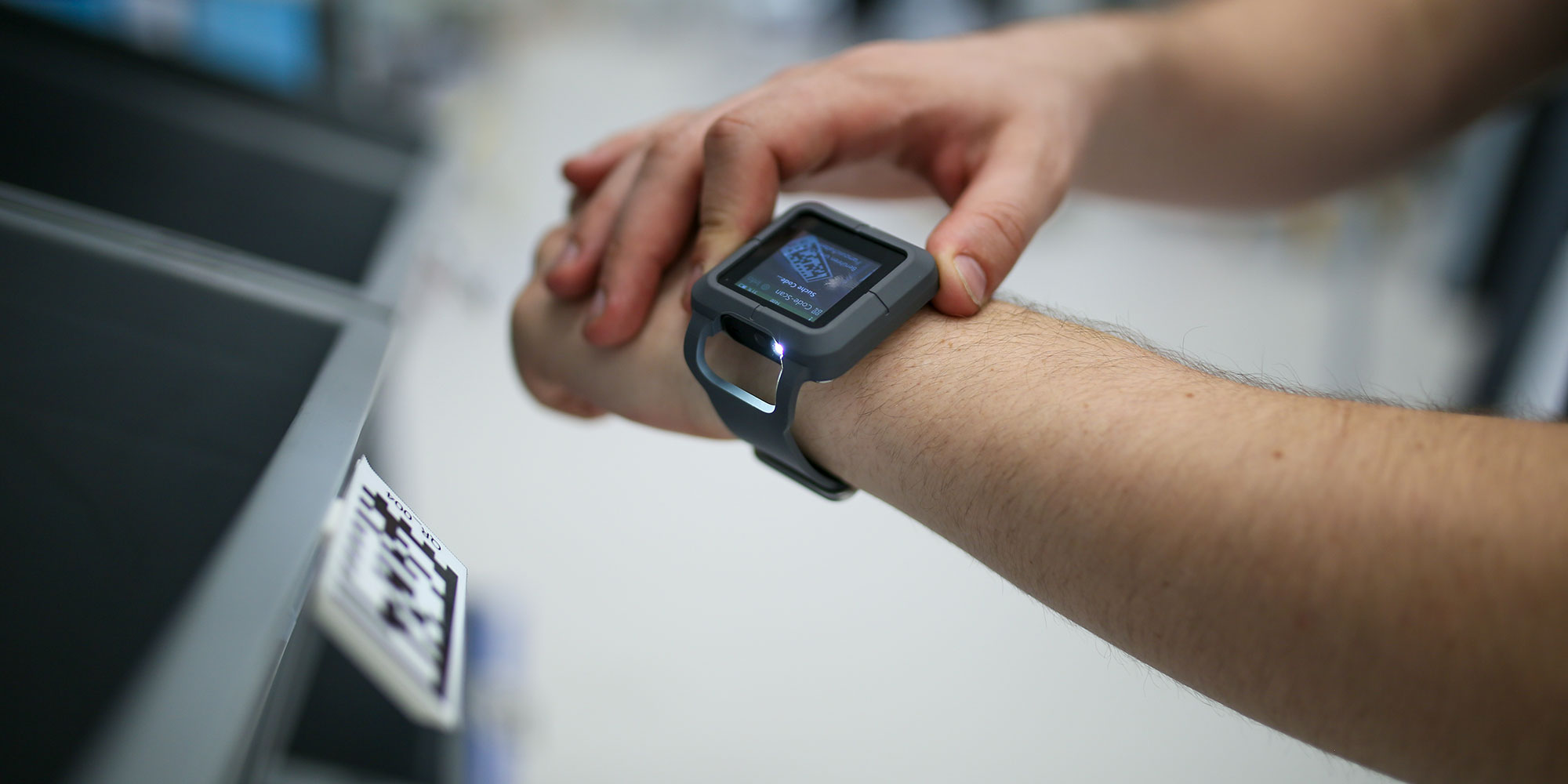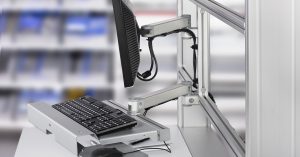Coined as part of the high-tech strategy of the German Federal Government, the term “Industry 4.0” was first introduced at the Hannover Messe trade fair in 2011.
Since then, it has had a profound impact on the way experts discuss the digitalisation of mechanical engineering and industry – and not just in Germany, but all over the world. At the same time, it is often used as a mere buzzword, so its actual meaning is not always clear. Generally speaking, Industry 4.0 refers to the digitalisation of production through networking – between man and machine and between different machines. The goal is to create a smart factory that organises itself. Although the role of humans is becoming increasingly supervisory, Industry 4.0 is not about replacing them, as Germany’s Mechanical Engineering Industry Association (VDMA) points out: “Despite increasing automation, humans are at the centre of Industry 4.0. After all, without qualified employees, it will not be possible for mechanical and factory equipment engineering to maintain its technological edge and its leading position on the international markets over the long term.” In this blog post, we’ll give you some prime examples of Industry 4.0. Although they only represent a small part of a bigger picture, they clearly show the potential of the technologies in question.
Automated installation guides and human-machine communication
The AIXLAB research lab at the Laboratory for Machine Tools and Production Engineering (WZL) at RWTH Aachen University investigates how artificial intelligence (AI) can provide targeted support to industrial production workers. The lab’s first project focused on optimising manual assembly. To this end, it set up four ergonomic work benches from item and then linked them to various digital technologies. One of the solutions used was a system for assisting assembly work that had been developed by the members of the AuQuA research project. The AI automatically creates assembly instructions that employees can use in their work and for training courses on new working processes. Instead of being displayed on an end device, the instructions are projected onto the working surface and the corresponding workpiece. The process of optimising the assembly instructions and inspecting the quality of the assembly is also automated. In other projects, AIXLAB is focusing on adapting technologies such as virtual reality and augmented reality to suit the requirements of manual production. These measures must be viewed in the context of the Internet of Production – a version of the Internet of Things that takes into account the features unique to production technology.
aucobo reacted quickly to the special working conditions brought on by the coronavirus pandemic. A dedicated COVID-19 app sends automatic warning notifications as soon as someone fails to maintain the minimum distance of 1.5 metres from other people nearby.
The start-up aucobo offers another example of Industry 4.0 that revolves around the efficient provision of information. Its software analyses machine data and then assigns necessary tasks based on parameters such as qualification and availability. However, it is the employees themselves who ultimately decide who takes on which specific task. So, for example, the roles of individual employees in the system can be changed by simply scanning a QR code. The actual human-machine communication takes place on end devices such as smartwatches, smartphones or tablets. Exactly which device is used depends entirely on the particular area of activity. Logisticians, for example, prefer larger devices and fast scanners. For that reason, combining the aucobo software and special smartwatches with a larger-than-average display and laser scanner is a perfect fit for this scenario. aucobo reacted quickly to the special working conditions during the coronavirus pandemic. A dedicated COVID-19 app sends automatic warning notifications as soon as someone fails to maintain the minimum distance of 1.5 metres from other people nearby. If someone is infected with the coronavirus, a contact log shows who came into contact with that person – all while safeguarding the data and privacy of those involved, of course.

Human-robot collaboration in assembly
A collaborative robot assembly system in use at item can be operated without special knowledge and implemented using existing infrastructure. Find out more details about the benefits of these systems, how to implement them and the response of staff members.
Digital twins and cobots as examples of Industry 4.0
A “digital twin” is the three-dimensional representation of a real object or one that is still in development. With the help of VR or AR glasses, this simulation can be viewed as an immersive experience. The August-Wilhelm Scheer Institute (AWS) for digitized products and processes is carrying out intensive research into both variants of the digital twin. On the one hand, when it comes to machines that are already in use, users can access machine data to simulate and interact with individual components. They can then focus on the relevant component in a virtual environment and view the performance data on a dashboard. This means maintenance procedures and troubleshooting can be carried out remotely. On the other hand, when dealing with the digital twin of a prototype, users can display relevant data in a simulated conference room. Teams from anywhere in the world can meet in these virtual offices to drive forward work on the prototype. This noticeably boosts efficiency. The 3D environment can be customised and equipped with whiteboards, video files and slides, for example. Since both variants of the digital twin eliminate the need for travel, this example of Industry 4.0 shows how much digitalisation is contributing to sustainability.
To take the strain off staff in manual assembly, item has developed a modular system for human-robot collaboration. Thanks to this solution, products that previously had to be made by hand can be assembled using semi-automated processes.
Human-robot collaboration is also looking to the future. This is where lightweight robots come into play – collaborative robots, also known as “cobots” for short. They resemble a human arm and are known for their relatively compact design and versatility. First and foremost, cobots take over repetitive tasks, taking a great deal of strain off workers and reducing the error rate. Thanks to their compact design and special sensors that detect people and obstacles, cobots can handle components alongside their human colleagues without the need for a safety guard. To take the strain off staff in manual assembly, item has developed a modular system for human-robot collaboration. Thanks to this solution, products that previously had to be made by hand can be assembled using semi-automated processes. The system comprises an industrial robotic arm from our collaboration partner Universal Robots, which is fitted to a wheeled functional cell that can be attached to any item work bench via a docking station. If the cobot is not needed, the functional cell can be undocked and stowed away in a matter of seconds.
Are you interested in digitalisation and what the future holds for mechanical engineering? Then we have something that’s right up your street! Simply subscribe to the item blog by completing the box at the top right.





